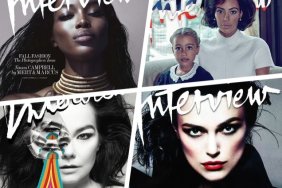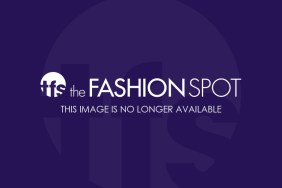It is often said the only real constant in life is change, and that there is a time and season for everything. As many in the fashion community have reacted to this season of economic turmoil by hunkering down and retracting, John Bartlett has chosen to adapt to changing economic times by revitalizing his brand and drawing from his deep well of spiritual resources. While others are just beginning to re-strategize and re-examine where their brands fit in this new economy, John Bartlett started on that path some years back. His intelligent, thoughtful approach to fashion and life is reflected in collections that celebrate not only the beauty of the male physique, but also the practical needs of the average consumer.
After almost two decades in the industry, John Bartlett’s perspective on what men want to wear is still fresh, vibrant, and grounded in his unique understanding on what looks good on the masculine frame. In seasons of plenty or draught, John Bartlett stays prepped to weather the vicissitudes of changing markets by casting his masterful craftsmanship upon the waters of innovation and staying true to his aesthetic vision. And in that, he is a man for all seasons.
John, after graduating from Harvard University you enrolled in the menswear department at FIT. Could you briefly talk about your journey from Harvard to a career in fashion?
I went to a Catholic boys’ school and had to wear a uniform. Everyday I would try to make my uniform look different. I also always loved clothes but I never considered fashion as a career, I just thought I would use fashion as a way to express myself. In my last year at Harvard, I realized that what was most important was learning and gaining knowledge, not necessarily declaring a major or figuring out what your life’s pursuit would be. Around that time I started meeting kids from the University of Cincinnati who were pursuing a career in the performing arts and moving to NYC. I realized I had more in common with those kids than I did with some of my Harvard colleagues. So after Harvard, I moved to NYC and went to FIT at night and worked whatever job I could find during the day.


I have always been interested in Eastern philosophy and thought. I also went to the American West and did some Native American shaman and vision quest spiritual traditions.


How is your new label “Claiborne by John Bartlett” that launched in Spring 2009 doing?
It is doing great, and it has given me the opportunity to work in a different marketplace – one that is more accessible price-wise.
You have always liked emphasizing a man’s physique in your clothes— particularly broad shoulders tapering down to a narrow waist. Where does that aesthetic come from?
My look is a celebration of masculinity, and giving great looks that accentuate maleness and the work some of them have done on their bodies. My clothing, though not tight fitting, is cut in all the right places. My clothing also fits men who are larger than the average 22-year old European male. A lot of high-end designers are promoting a leaner aesthetic, which looks great on a certain type of guy, but a lot of men—particularly as they get older—don’t fit that image.

There are also lots of shades of orange and green in this collection. Why that color palette?
My color palette is always a response to what I did in the previous season. If one season is very dark, then the next season will be more colorful. For this particular collection I wanted everything to be very joyous, very optimistic. Greens and oranges are my favorite secondary colors, and these are great colors that you can wear and still feel like a guy.
You are using knee-length shorts, but they are a bit more fitted as opposed to loose or baggy. Could you talk about that?
I like a short that is more tailored, almost like a dress pant, but shorter. Every guy is always looking for the perfect pair of flat front shorts.

And you also have these really affordable price points, under $100.
For “Claiborne by John Bartlett” it is very important to have very competitive prices but still have style, color, and detail. And with a company the size of Liz Claiborne you can do that. This Claiborne collection nicely offsets my own collection, where the prices are somewhat higher.
Could you talk about Rogues Gallery?
Rogues Gallery is a brand from Portland, Maine. The brand reflects that nautical feel that you get in Maine juxtaposed against these imprinting of old tombstones and gravesites made into graphics set on clothing. I met Alex of Rogues Gallery at a party and we decided to do something together. We came up with the concept of gay iconography from the 70’s – lumberjacks, leather bars and gay logos – which denotes an era when people felt more liberated, if not reckless. I think that same sensibility exists, but in a different way. I am always looking at different gay subcultures and icons like James Baldwin, Jean Genet, Tom of Finland, Robert Mapplethorpe, to name a few, to draw inspiration from. All those reference points influence the visual culture. A lot of young people love the visual images even if they don’t know where they come from. My background in sociology draws me to make connections to what I am doing now from what has influenced me culturally. So at Rogue Gallery, we have combined a nautical aesthetic with political and cultural references expressed in t-shirts and leather goods.

Could you talk about your affiliation with the North Shore Animal League (NSAL) and Tiny Tim?
While I was on my sabbatical I adopted Tiny Tim from NSAL, and I became involved with them with different events. It’s very important if people are interested in getting a pet that they adopt one from the animal shelters. Many of my industry friends have come to adoption events at my store and adopted a pet. This is all a part of me giving back to the community. I also work with the Trevor Project, which is a 24-hour hotline for gay teens and with SAGE, which is a support organization for gay seniors.
How did you come to use the Tiny Tim logo for your brand?
I wanted something that was an icon that wasn’t about status, and that was relatable. A friend of mine who did graphics came up with the logo that captures Tiny Tim perfectly.
What’s next for you?
There are lots of things in the works. I am talking to different people in television programming because the fashion world is moving toward combining fashion aesthetics with the film and television industry. This will be a part of the next generation of innovation in fashion. I am also looking to develop a lifestyle book. I will continue to develop my collection and collaborate with other artists. As long as the creative energies are stimulated, I am going to keep going.
John Bartlett’s store is located at 143 Seventh Avenue, NY, NY.
For more information about John Bartlett’s collections, go to johnbartlettny.com.
Photos are courtesy of John Bartlett.






